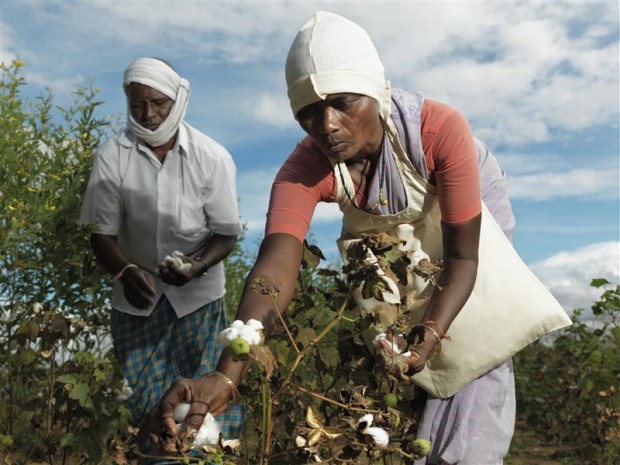Has our Detox campaign made you think about your clothes and their hidden consequences? You may already heart second hand, throwaway fashion makes you ill, and your mantra is quality not quantity. But how else can you align your sartorial and sustainable sides? Here's our first set of tips to help decrease your fashion's footprint.
UPDATE AUGUST 18: Nike commit to champion a toxic-free future! >>
Writer Lucy Siegle's latest book To Die For says that today people buy roughly four times the number of clothes they were in 1980. That’s an average expenditure of £626 pounds a year on clothes, adding up to 28 new kilograms of clothing per person. Yet despite our over-stuffed wardrobes we generally only wear 10 per cent of our clothes. So before buying something ask yourself: "Do I really need it?"
If the answer is “yes”, but you want to make eco-conscious decisions about your clothing choices, give some thought to the following tips.
1) Buy second-hand
Charity shops, vintage stores and eBay are packed full of clothes – check them out and pick up a bargain.
2) Buy classics
To be truly ecological, clothing needs to be worn again and again. So don’t buy fast fashion, buy classics, or things that you love. And if they go ‘out of fashion’ mothball them – you’ll be surprised how quickly styles come round again.
3) Buy green
Look out for brands that make clothing from recycled materials or use only environmentally-friendly fabrics and natural dyes. You can find specialised eco-fashion stores in many cities today, or you can check them out and order online.
4) Focus on quality
Buy well-crafted clothing that is made to last. Check the seams, zippers and buttons, which are well known breaking points. This also applies to shoes too: look at how well the sole is attached.
5) Fix things up
If you’ve got clothes you’re not wearing because they need a new zip or need taking up, then dive in and give it a go. Failing that, take them to the local tailors. You can also re-fashion your clothes by changing buttons, turning dresses into skirts, jeans into shorts and more. For inspiration checkout Refashion Co-op.

Above: Organic cotton farmers pick cotton in Kishtapur, India. © Peter Caton / Greenpeace
6) Go organic with your cotton
Conventional cotton is a delicate plant that is pampered with fertilisers and pesticides, and heavily irrigated. According to the Water Footprint Network, just one 250g cotton shirt is estimated to use 150g of pesticides and up to 2,720 litres of water. Find out more by reading The Water Footprint of Cotton Consumption report by Ecological Economics - PDF.
Organic cotton is a good alternative because it is grown in toxin-free fields. Begin to switch, at least for baby clothes and basics like t-shirts and underwear. For details of UK stockists, visit the Pan UK Cotton Directory.
7) Look at the label
It is not easy to get along in the label jungle. But you can inform yourself about the different eco-labels and what they really mean by visiting the Eco Label Index or Eco Textile.
Look out for part two of how you can green your wardrobe tomorrow....
Find out more about Greenpeace's work on toxic chemicals and our Detox campaign:
>> Puma
leaps ahead of Nike and Adidas in Detox Challenge
>> From
China's Toxics team: Fishing Near An Emissions Pipe
>> From
our China team: how to lose a foot on fieldwork
>> Nike
& Adidas: time to Detox the world’s water
>> Hidden
Consequences: The unseen price of water pollution


